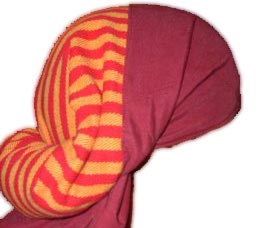LA SEMANA SANTA EN ESPAÑA
The Spanish word for 'Easter' is Pascua.
The seven days leading up to Easter Sunday are called
Holy Week, or La Semana Santa in Spanish. All over Spain, it is a week of spectacular street processions (procesiones).
The first day of La Semana Santa is Palm Sunday.
In Spanish, it is el Domingo de Ramos.
The word ramos means 'bouquets' and 'branches.'
On the morning of el Domingo de Ramos, most Spanish people go to church
In Spain, when you go to church on Palm Sunday you carry a palm branch or an olive branch.
Boys carry a plain branch and girls carry one that has been decorated with ribbons and sweets. The branches are then blessed by the priest.
During La Semana Santa, starting on el Domingo de Ramos, Spanish towns have street parades every day.
In the processions, people carry and follow floats,
known as pasos.
On the floats, there are statues of Jesús and La Virgen María. The floats are beautifully decorated with flowers, gold, silver, candles and fine fabrics.
The heavy floats are carried by men called costaleros. These men have the very difficult job of carrying the extremely heavy weight of the float.
The costaleros practise for months so that the rhythm and speed of how they walk is perfect for the processions of Holy Week.
Los costaleros must carry the weight of the float on their shoulders and neck. In order to do this, their heads and shoulders are protected by a cushioned
head scarf called un costal.
The floats (los pasos) are followed and surrounded by people known as nazarenos.
Los nazarenos are men, women and children who wear long robes. These people are unrecognisable because they wear veils to cover their faces. The veil is called un antifaz
and it is usually draped over a tall, cone shaped hat
known as un capirote.
During the processions, often you will hear someone singing a special Easter song called una saeta. It is sung without music and it has a very special sound. It is sung in the open air to the statues of the procession. The singer's voice seems to be carried for a long distance, filling the air, for everyone to hear.
Click HERE to watch a video of the teenage flamenco singer María Carrasco as she sings una saeta.
On Maundy Thursday (el Jueves Santo) all the church bells are tied so that they remain silent. They do not ring again until Easter Day.
On el Jueves Santo, (Maundy Thursday), in the town of Verges, in Cataluña, there is a very famous event every year. It is a skeleton dance!
It is called La Dansa de la Mort. Two adults and three children dress up in skeleton costumes and dance to a drum beat.
On el Viernes Santo, (Good Friday), meat is not eaten. That is why dishes for this day are made with fish and vegetables. Popular foods for Good Friday in Spain are
sopa de ajo (garlic soup) and potaje de vigilia ( a stew of cod, chick peas and spinach.)
During the period of Easter in Spain, torrijas are eaten. These are thick slices of bread, soaked in milk and beaten egg, fried in olive oil and served with sugar or honey.
A popular cake of celebration to eat on Easter Day is called La Mona de Pascua. It is decorated with coloured feathers and big chocolate figurines.
Cake shops compete to see who can make the most impressive monas to place in their shop windows!
Nowadays, the monas are so ambitious and wonderful, that they even talk about them on the television news! Some monas look like sculptures carved out of chocolate.
¡Ñam ñam!
Traditionally, godparents give una mona to their godchild as a gift for Easter Day.
During the happy days of Easter Sunday and Easter Monday, it is the tradition to eat lamb.
Lamb, el cordero, is the traditional meat for
Easter Day in Spain.
Paella is also popular.
Ahora, go to the Feliz Pascua page at the top of this blog to answer some questions.
















